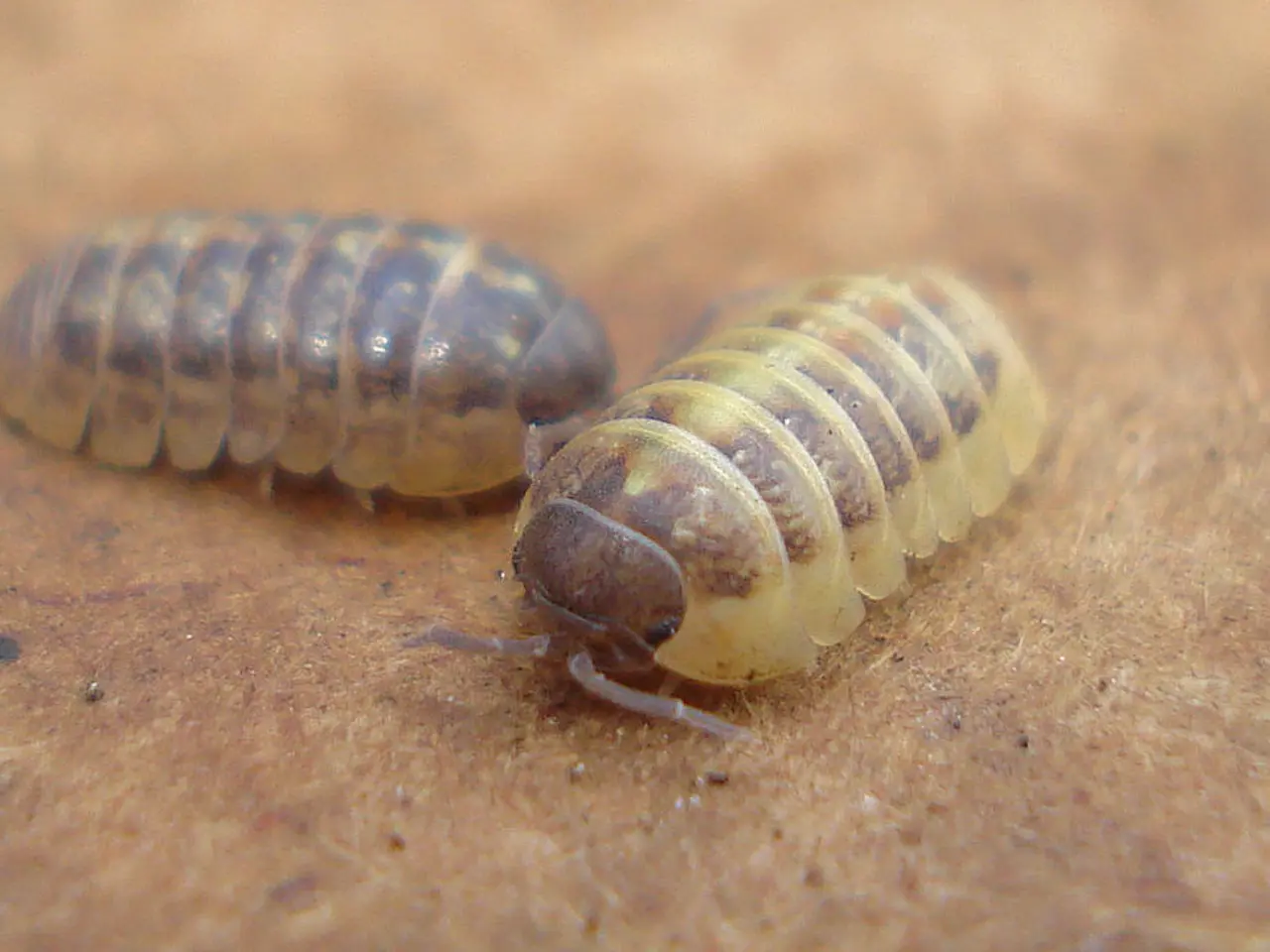Ohio's Benevolent Insects: The Benefits of Crawling Critters
Attracting and Conserving Natural Predators in Hop Yards
In the world of hop cultivation, maintaining a balance between pests and beneficial species is crucial for a healthy and sustainable crop. Here's a guide on strategies for attracting and conserving natural predators such as predatory mites, lacewings, lady beetles, spiders, and minute pirate bugs in a hop yard.
Creating Favorable Habitat
To support these beneficial arthropods, incorporate diverse vegetation such as flowering plants, groundcovers, and shrubs that offer nectar, pollen, and shelter. Planting small island beds or dense native groundcovers within or near the hop yard can provide refuge and alternative food sources for these predators[1][2].
Maintaining Habitat Connectivity
Manage mowing and cultivation practices to maintain connected refuge areas. Mowing concentrically from the perimeter inward can create stepping stones or "hop" areas for predators to move safely between habitats[1].
Avoiding Overdisturbance
Limit soil disturbance and retain some leaf litter or mulch to provide overwintering sites for predators, especially mites and spiders.
Encouraging Flowering Plants
Many predatory insects like lacewings and minute pirate bugs benefit from access to nectar and pollen, which improve their survival and reproduction.
Pesticide Management
When it comes to pesticide use, choose products with low toxicity to beneficial predators or use biopesticides and products labeled as compatible with natural enemies. Apply pesticides when predators are least active, focus applications only on infested areas, avoid broad-spectrum insecticides, and monitor predator populations regularly to decide if and when pesticide applications are necessary[1][2].
By integrating these habitat enhancement methods with careful pesticide management, hop growers can foster robust populations of natural predators, improving pest control efficacy while reducing chemical impacts. This ecological approach promotes sustainability and long-term hop yard health[1][2].
Note: While specific hop yard studies were not directly found in the search results, these principles align with well-established practices in agricultural ecosystems for conserving beneficial arthropods.
Identifying Common Predators
- Minute pirate bug adults are black with white and brown markings and are oval-shaped.
- Adult mite destroyer lady beetles are round, tiny (1/16 inch) and black, important predators of spider mites.
- Lacewing pupae are silken and spherical, and adults are green with two pairs of lacy wings.
- Lacewing eggs are stalked and can often be found on leaves, while larvae are brown with long bodies and sickle-shaped mouthparts for sucking fluids from their prey.
- Lady beetle larvae are dark in color with bright orange markings.
- Predatory mites range from yellow to red in color and are distinguishable from spider mites due to their rapid movement and coloration.
- Adult pink lady beetles are oval-shaped and 1/5 inch long, bright red to pink, with six black spots on each wing cover.
- Lady beetle pupae are round in shape and usually have orange and black spots.
- Wolf spiders are commonly found moving quickly near the bases of plants in hop yards.
It is not recommended to purchase and release lady beetles, specifically Hippodamia convergens, as they can disperse away from the release site and potentially spread diseases to native populations. Lacewings, however, are efficient and voracious predators that consume pests, with both adults and larvae participating in predation. Minute pirate bugs are tiny true bugs with piercing, sucking mouthparts and a wide host range, consuming up to 40 spider mites or aphids per day. Predatory mites are effective at controlling spider mites, aphids, and caterpillar eggs, with a predator to prey ratio of 1:20 indicating that sufficient control by predatory mites can be provided.
By understanding and implementing these strategies, hop growers can create a thriving ecosystem within their hop yards, promoting a balance between pests and beneficial species for a healthier, more sustainable crop.
[1] Xerces Society for Invertebrate Conservation. (2021). Integrated Pest Management for Hop Yards. Retrieved from https://xerces.org/wp-content/uploads/2021/07/Xerces-Society-IPM-for-Hop-Yards.pdf
[2] Cornell University Cooperative Extension. (2021). Biocontrol Agents for Hop Yards. Retrieved from https://blogs.cornell.edu/hop/2015/07/28/biocontrol-agents-for-hop-yards/
- To ensure a balanced ecosystem in hop yards, incorporate science-based measures such as creating favorable habitats with diverse vegetation and maintaining habitat connectivity, while also practicing careful pest management to protect natural predators like spiders, minute pirate bugs, lacewings, lady beetles, and predatory mites.
- Encouraging conservation and the thriving presence of beneficial arthropods in hop yards can contribute positively to health-and-wellness aspects, promoting environments that support long-term sustainability and increase the efficiency of pest control.
- Recognizing common predators, such as the minute pirate bug, mite destroyer lady beetles, lacewings, and various species of lady beetles, is essential for hop growers seeking to adopt healthier and more holistic pest management practices, enhancing the fitness-and-exercise of their hop yards through the development of a balanced ecosystem.




